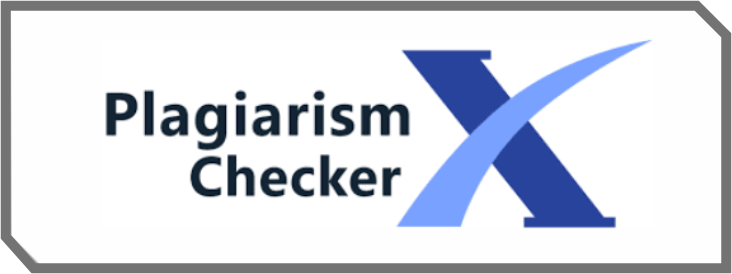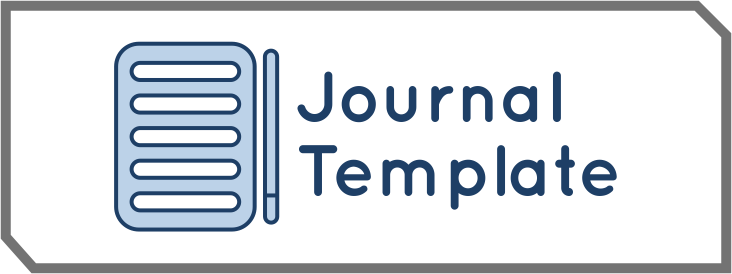Impact of Dietary Coconut Oil (Cocos nucifera L.) on Aeromonas hydrophila Colonization and Lactic Acid Bacteria Populations in Zebrafish (Danio rerio): Implications for Aquaculture Health
DOI:
https://doi.org/10.62793/japsi.v2i1.44Keywords:
Aeromonas hydrophila, Coconut oil, Danio rerio, ImmunomodulatorAbstract
The Aeromonas hydrophila (A. hydrophila) Aeromonas hydrophila (A. hydrophila) is an opportunistic pathogen causing significant losses in aquaculture. The overuse of antibiotics has led to antimicrobial resistance, necessitating alternative control strategies. This study evaluates the potential of coconut oil to inhibit A. hydrophila colonization in gills, brain, and gut microbiota of zebrafish while enhancing lactic acid bacteria (LAB) populations. A completely randomized design was used with five groups: a negative control (healthy), a positive control (A. hydrophila-infected), and three treatment groups (1000 mg/kg, 2000 mg/kg, 4000 mg/kg coconut oil) for 60 days. Bacterial load in gills and brain was quantified using the pour plate method on Rimler-Shotts agar, while LAB in the gut was assessed using de Man, Rogosa, and Sharpe Agar (MRSA). 1000 mg/kg coconut oil significantly reduced A. hydrophila in the gills (0.3 ± 0.09 × 10⁷ CFU/ml) compared to the positive control (138.13 ± 11.26 × 10⁷ CFU/ml). 4000 mg/kg was most effective in reducing A. hydrophila in the brain (1.78 ± 0.51 × 10⁷ CFU/ml vs. 4.53 ± 0.40 × 10⁷ CFU/ml in the positive control). LAB populations significantly increased (p < 0.0001), with the highest count at 1000 mg/kg (9.20 ± 0.87 × 10⁷ CFU/ml), followed by 2000 mg/kg (3.16 ± 0.13 × 10⁷ CFU/ml), and 4000 mg/kg (1.78 ± 0.35 × 10⁷ CFU/ml). Coconut oil effectively enhances LAB populations, inhibits A. hydrophila colonization, and acts as a natural antimicrobial and probiotic agent. The 1000 mg/kg dose is optimal for gut microbiota improvement, while 4000 mg/kg protects brain tissues, highlighting coconut oil’s potential as an eco-friendly alternative to antibiotics in aquaculture.
References
Abdelhamed, H., Ibrahim, I., Baumgartner, W., Lawrence, M. L., & Karsi, A. (2017). Characterization of Histopathological and Ultrastructural Changes in Channel Catfish Experimentally Infected with Virulent Aeromonas hydrophila. Frontiers in Microbiology, 8, 1519. https://doi.org/10.3389/fmicb.2017.01519
Abel Anzaku, A., Ernsets bassey, A., Martins, A., Uplah, P., & Terungwa, K. (2017). Antimicrobial Activity of Coconut Oil and its Derivative (Lauric Acid) on Some Selected Clinical Isolates. International Journal of Medical Science and Clinical Inventions, 4(8). https://doi.org/10.18535/ijmsci/v4i8.12
Abdul Kari Z, Wee W, Mohamad Sukri SA, et al (2022) Role of phytobiotics in relieving the impacts of Aeromonas hydrophila infection on aquatic animals: A mini-review. Front Vet Sci 9:1023784. https://doi.org/10.3389/fvets.2022.1023784
Barbara, G., Barbaro, M. R., Fuschi, D., Palombo, M., Falangone, F., Cremon, C., Marasco, G., & Stanghellini, V. (2021). Inflammatory and Microbiota-Related Regulation of the Intestinal Epithelial Barrier. Frontiers in Nutrition, 8, 718356. https://doi.org/10.3389/fnut.2021.718356
Bilal RM, Liu C, Zhao H, et al (2021) Olive Oil: Nutritional Applications, Beneficial Health Aspects and its Prospective Application in Poultry Production. Front Pharmacol, 12:723040. https://doi.org/10.3389/fphar.2021.723040
Deen A, Visvanathan R, Wickramarachchi D, et al (2021) Chemical composition and health benefits of coconut oil: an overview. J Sci Food Agric 101:2182–2193. https://doi.org/10.1002/jsfa.10870
Dong X (2018) Current Strategies for Brain Drug Delivery. Theranostics 8:1481–1493. https://doi.org/10.7150/thno.21254
Elbehiry, A., Marzouk, E., Abdeen, E., Al‐Dubaib, M., Alsayeqh, A., Ibrahem, M., Hamada, M., Alenzi, A., Moussa, I., & Hemeg, H. A. (2019). Proteomic characterization and discrimination of Aeromonas species recovered from meat and water samples with a spotlight on the antimicrobial resistance of Aeromonas hydrophila. MicrobiologyOpen, 8(11), e782. https://doi.org/10.1002/mbo3.782
Emam M, Caballero-Solares A, Xue X, et al (2022) Gill and Liver Transcript Expression Changes Associated With Gill Damage in Atlantic Salmon (Salmo salar). Front Immunol 13:806484. https://doi.org/10.3389/fimmu.2022.806484
Firmino, J. P., Galindo-Villegas, J., Reyes-López, F. E., & Gisbert, E. (2021). Phytogenic Bioactive Compounds Shape Fish Mucosal Immunity. Frontiers in Immunology, 12, 695973. https://doi.org/10.3389/fimmu.2021.695973
Freitas, M. R., Freire, N. B., Peixoto, L. J. E. S., Oliveira, S. T. L. D., Souza, R. C. D., Gouveia, J. J. D. S., Costa, M. M. D., & Gouveia, G. V. (2018). The presence of plasmids in Aeromonas hydrophila and its relationship with antimicrobial and heavy metal-resistance profiles. Ciência Rural, 48(9). https://doi.org/10.1590/0103-8478cr20170813
Fischer CL, Drake DR, Dawson DV, et al (2012) Antibacterial Activity of Sphingoid Bases and Fatty Acids against Gram-Positive and Gram-Negative Bacteria, Antimicrob Agents Chemother 56:1157–1161. https://doi.org/10.1128/AAC.05151-11
Garcia, C., Andersen, C. J., & Blesso, C. N. (2023). The Role of Lipids in the Regulation of Immune Responses. Nutrients, 15(18), 3899. https://doi.org/10.3390/nu15183899
Grimsey, E., Collis, D. W. P., Mikut, R., & Hilpert, K. (2020). The effect of lipidation and glycosylation on short cationic antimicrobial peptides. Biochimica et Biophysica Acta (BBA) - Biomembranes, 1862(8), 183195. https://doi.org/10.1016/j.bbamem.2020.183195
Guimarães A, Venâncio A (2022) The Potential of Fatty Acids and Their Derivatives as Antifungal Agents: A Review. Toxins, 14:188. https://doi.org/10.3390/toxins14030188
Hopo MG, Mabrok M, Abu-Elala N, Yu Y (2024) Navigating Fish Immunity: Focus on Mucosal Immunity and the Evolving Landscape of Mucosal Vaccines. Biology 13:980. https://doi.org/10.3390/biology13120980
Hung, H.-C., Tsai, S.-F., Chou, H.-W., Tsai, M.-J., Hsu, P.-L., & Kuo, Y.-M. (2023). Dietary fatty acids differentially affect secretion of pro-inflammatory cytokines in human THP-1 monocytes. Scientific Reports, 13(1), 5511. https://doi.org/10.1038/s41598-023-32710-5
Intahphuak S, Khonsung P, Panthong A (2010) Anti-inflammatory, analgesic, and antipyretic activities of virgin coconut oil. Pharmaceutical Biology 48:151–157. https://doi.org/10.3109/13880200903062614
Islam, J., James Slater, M., Thiele, R., & Kunzmann, A. (2021). Influence of extreme ambient cold stress on growth, hematological, antioxidants, and immune responses in European seabass, Dicentrarchus labrax acclimatized at different salinities. Ecological Indicators, 122, 107280. https://doi.org/10.1016/j.ecolind.2020.107280
Khan, H. U., Aamir, K., Jusuf, P. R., Sethi, G., Sisinthy, S. P., Ghildyal, R., & Arya, A. (2021). Lauric acid ameliorates lipopolysaccharide (LPS)-induced liver inflammation by mediating TLR4/MyD88 pathway in Sprague Dawley (SD) rats. Life Sciences, 265, 118750. https://doi.org/10.1016/j.lfs.2020.118750
Kumar, S. S., Manasa, V., Madhubalaji, C. K., Tumaney, A. W., & Giridhar, P. (2023). GC/MS quantification of individual fatty acids of selected green leafy vegetable foliage and their biodiesel attributes. Grasas y Aceites, 74(2), e499. https://doi.org/10.3989/gya.0907212
Lee, S. I., & Kang, K. S. (2017). Function of capric acid in cyclophosphamide-induced intestinal inflammation, oxidative stress, and barrier function in pigs. Scientific Reports, 7(1), 16530. https://doi.org/10.1038/s41598-017-16561-5
Lewis ED, Meydani SN, Wu D (2019) Regulatory role of vitamin E in the immune system and inflammation. IUBMB Life, 71:487–494. https://doi.org/10.1002/iub.1976
Li, Z., Chen, F., Wei, M., Zhi, L., Su, Z., Chong, Y., Xiao, Z., & Wang, J. (2024). Concurrent impacts of polystyrene nanoplastic exposure and Aeromonas hydrophila infection on oxidative stress, immune response and intestinal microbiota of grass carp (Ctenopharyngodon idella). Science of The Total Environment, 912, 169225. https://doi.org/10.1016/j.scitotenv.2023.169225
Liu, H., Lu, H., Wang, Y., Yu, C., He, Z., & Dong, H. (2024). Unlocking the power of short-chain fatty acids in ameliorating intestinal mucosal immunity: A new porcine nutritional approach. Frontiers in Cellular and Infection Microbiology, 14, 1449030. https://doi.org/10.3389/fcimb.2024.1449030
Mahmood S (2024) Molecular characterization of Aeromonas hydrophila detected in Channa marulius and Sperata sarwari sampled from rivers of Punjab in Pakistan. PLoS ONE, 19:41524 Bytes. https://doi.org/10.6084/M9.FIGSHARE.25329460.V3
Matin, A., Brandić, I., Gubor, M., Pezo, L., Krička, T., Matin, B., Jurišić, V., & Antonović, A. (2024). Effect of conduction drying on nutrient and fatty acid profiles: A comparative analysis of hazelnuts and walnuts. Frontiers in Sustainable Food Systems, 8, 1351309. https://doi.org/10.3389/fsufs.2024.1351309
Mustafa A, Indiran MA, Shanmugham R, Ramalingam K (2023) Anti-inflammatory activity of lauric acid, thiocolchicoside and thiocolchicoside-lauric acid formulation. Bioinformation, 19:1075–1080. https://doi.org/10.6026/973206300191075
Nhinh, D. T., Le, D. V., Van, K. V., Huong Giang, N. T., Dang, L. T., & Hoai, T. D. (2021). Prevalence, Virulence Gene Distribution and Alarming the Multidrug Resistance of Aeromonas hydrophila Associated with Disease Outbreaks in Freshwater Aquaculture. Antibiotics, 10(5), 532. https://doi.org/10.3390/antibiotics10050532
Nitbani FO, Tjitda PJP, Nitti F, et al (2022) Antimicrobial Properties of Lauric Acid and Monolaurin in Virgin Coconut Oil: A Review. ChemBioEng Reviews, 9:442–461. https://doi.org/10.1002/cben.202100050
Ofek T, Izhaki I, Halpern M (2023) Aeromonas hydrophila infection in tilapia triggers changes in the microbiota composition of fish internal organs. FEMS Microbiology Ecology, 99:fiad137. https://doi.org/10.1093/femsec/fiad137
Okeke, E. S., Chukwudozie, K. I., Nyaruaba, R., Ita, R. E., Oladipo, A., Ejeromedoghene, O., Atakpa, E. O., Agu, C. V., & Okoye, C. O. (2022). Antibiotic resistance in aquaculture and aquatic organisms: A review of current nanotechnology applications for sustainable management. Environmental Science and Pollution Research, 29(46), 69241–69274. https://doi.org/10.1007/s11356-022-22319-y
Pavlek LR, Dillard J, Rogers LK (2020) The role of oxidative stress in toxicities due to drugs of abuse. Current Opinion in Toxicology 20–21:29–35. https://doi.org/10.1016/j.cotox.2020.04.003
Qosimah, D., Amri, I. A., Pratama, D. A. O. A., Permata, F. S., Noorhamdani, N., Widasmara, D., & Sabri, J. (2024). Hexane extract from black soldier fly prepupae: A novel immunomodulatory strategy against Aeromonas hydrophila infection in zebrafish. Veterinary World, 1655–1660. https://doi.org/10.14202/vetworld.2024.1655-1660
Qosimah, D., Santoso, S., Maftuch, M., Khotimah, H., Fitri, L. E., Aulanni’am, A., & Suwanti, L. T. (2023). Aeromonas hydrophila induction method in adult zebrafish (Danio rerio) as animal infection models. Veterinary World, 250–257. https://doi.org/10.14202/vetworld.2023.250-257
Santa-María C, López-Enríquez S, Montserrat-de La Paz S, et al (2023) Update on Anti-Inflammatory Molecular Mechanisms Induced by Oleic Acid. Nutrients ,15:224. https://doi.org/10.3390/nu15010224
Santos, L., & Ramos, F. (2018). Antimicrobial resistance in aquaculture: Current knowledge and alternatives to tackle the problem. International Journal of Antimicrobial Agents, 52(2), 135–143. https://doi.org/10.1016/j.ijantimicag.2018.03.010
Schönfeld, P., & Wojtczak, L. (2016). Short- and medium-chain fatty acids in energy metabolism: The cellular perspective. Journal of Lipid Research, 57(6), 943–954. https://doi.org/10.1194/jlr.R067629
Schumann, J. (2016). It is all about fluidity: Fatty acids and macrophage phagocytosis. European Journal of Pharmacology, 785, 18–23. https://doi.org/10.1016/j.ejphar.2015.04.057
Semwal, A., Kumar, A., & Kumar, N. (2023). A review on pathogenicity of Aeromonas hydrophila and their mitigation through medicinal herbs in aquaculture. Heliyon, 9(3), e14088. https://doi.org/10.1016/j.heliyon.2023.e14088
Semwal, A., Kumar, A., & Kumar, N. (2023). A review on pathogenicity of Aeromonas hydrophila and their mitigation through medicinal herbs in aquaculture. Heliyon, 9(3), e14088. https://doi.org/10.1016/j.heliyon.2023.e14088
Shekhar, N., Tyagi, S., Rani, S., & Thakur, A. K. (2023). Potential of Capric Acid in Neurological Disorders: An Overview. Neurochemical Research, 48(3), 697–712. https://doi.org/10.1007/s11064-022-03809-4
Silalahi, J. (2020). Nutritional Values and Health Protective Properties Of Coconut Oil. Indonesian Journal of Pharmaceutical and Clinical Research, 3(2), 1–12. https://doi.org/10.32734/idjpcr.v3i2.4065
Stratev, D., & Odeyemi, O. A. (2016). Antimicrobial resistance of Aeromonas hydrophila isolated from different food sources: A mini-review. Journal of Infection and Public Health, 9(5), 535–544. https://doi.org/10.1016/j.jiph.2015.10.006
Torraca, V., & Mostowy, S. (2018). Zebrafish Infection: From Pathogenesis to Cell Biology. Trends in Cell Biology, 28(2), 143–156. https://doi.org/10.1016/j.tcb.2017.10.002
Tsuji, A. (2005). Small Molecular Drug Transfer across the Blood-Brain Barrier via Carrier-Mediated Transport Systems. 54–82.
Usuda, H., Okamoto, T., & Wada, K. (2021). Leaky Gut: Effect of Dietary Fiber and Fats on Microbiome and Intestinal Barrier. International Journal of Molecular Sciences, 22(14), 7613. https://doi.org/10.3390/ijms22147613
Vereau GV, Méndez G (2021) Antibacterial Effect of Coconut Oil (Cocus nucifera) on Streptococcus mutans ATCC 25175: An In vitro Study. nt J Odontostomat 15:922–927
Wan, Y., Liu, J., Mai, Y., Hong, Y., Jia, Z., Tian, G., Liu, Y., Liang, H., & Liu, J. (2024). Current advances and future trends of hormesis in disease. Npj Aging, 10(1), 26. https://doi.org/10.1038/s41514-024-00155-3
Wang, W., Sun, J., Liu, C., & Xue, Z. (2017). Application of immunostimulants in aquaculture: Current knowledge and future perspectives. Aquaculture Research, 48(1), 1–23. https://doi.org/10.1111/are.13161
Watanabe, S., & Tsujino, S. (2022). Applications of Medium-Chain Triglycerides in Foods. Frontiers in Nutrition, 9, 802805. https://doi.org/10.3389/fnut.2022.802805
Wu Y, Zhang H, Zhang R, et al (2021) Serum metabolome and gut microbiome alterations in broiler chickens supplemented with lauric acid. Poultry Science ,100:101315. https://doi.org/10.1016/j.psj.2021.101315
Yang H-T, Chen J-W, Rathod J, et al (2018) Lauric Acid Is an Inhibitor of Clostridium difficile Growth in Vitro and Reduces Inflammation in a Mouse Infection Model. Front Microbiol 8:2635. https://doi.org/10.3389/fmicb.2017.02635
Zlatanova, M., Nešić, A., Trbojević-Ivić, J., Četić, D., & Gavrović-Jankulović, M. (2024). Targeting NF-κB Signaling: Selected Small Molecules Downregulate Pro-Inflammatory Cytokines in Both Food Allergen and LPS-Induced Inflammation. International Journal of Molecular Sciences, 25(11), 5798. https://doi.org/10.3390/ijms25115798.
Downloads
Published
How to Cite
Issue
Section
License
Copyright (c) 2025 Journal of Agriprecision & Social Impact

This work is licensed under a Creative Commons Attribution-ShareAlike 4.0 International License.







